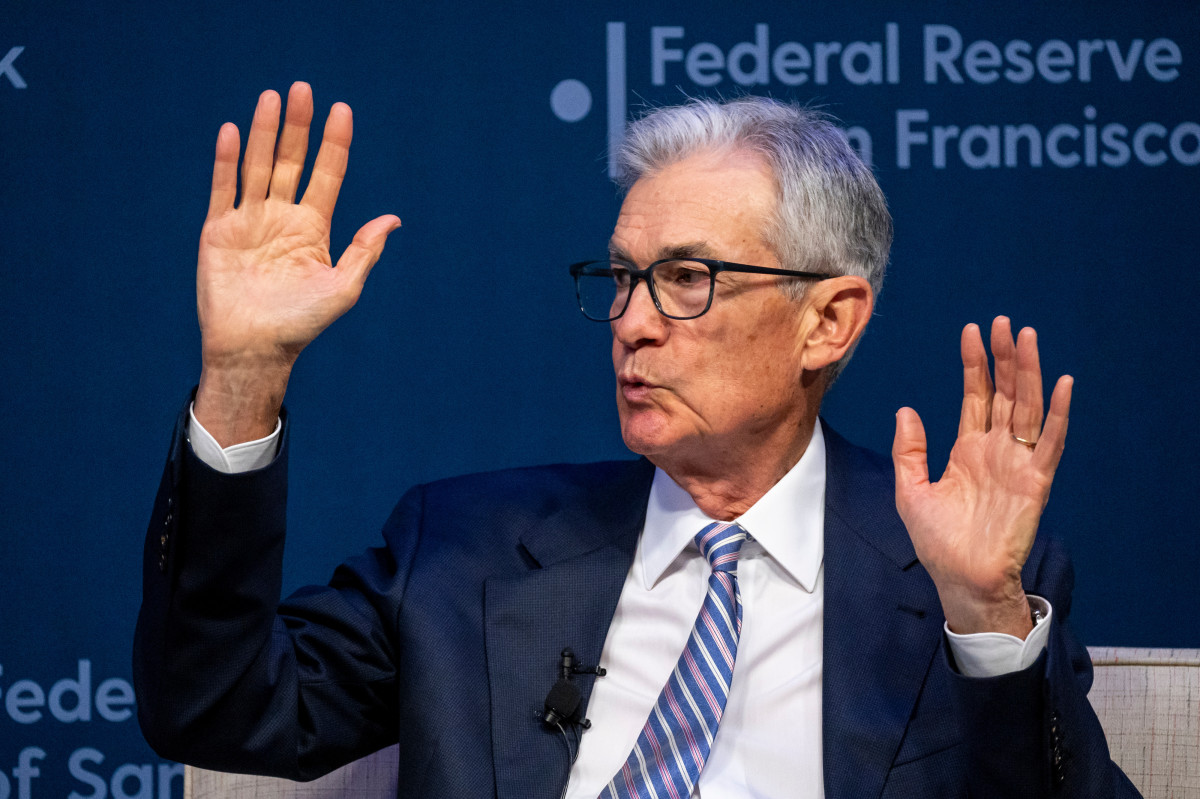
The big question for financial markets going into the Federal Reserve’s meeting this week is whether it will cut rates by 25 basis points or 50 points.
Related: Goldman Sachs issues stocks forecast for next year
Those who expect a quarter-percentage-point reduction say that while the economy has slowed, it’s not in danger of cratering. And they say that while inflation is slowing, it hasn’t been definitively slayed.
Those who anticipate a half-percentage-point rate decrease say the economy does risk a downturn and that inflation is no longer a problem.

How big will an interest rate cut be?
Making the calculation difficult for the Fed is that recent economic data have been mixed.
Related: Fed's rate decision will rock markets this week
For example, the economy expanded an annualized 3% in the second quarter, up from 1.4% in the first quarter. But the Atlanta Fed’s forecasting model puts growth at 2.5% for the third quarter.
As for inflation, the Fed’s favorite indicator, the personal consumption expenditures price index, climbed 2.5% in the 12 months through July. That’s down from 3.3% a year earlier, but it’s still above the Fed’s 2% inflation target.
Interest-rate swap positions show a 50-50 chance between the Fed moving 25 basis points or 50 points.
What interest rates mean for you
You’re probably aware already of how interest rates affect you personally. Lower rates mean lower payments on your home, auto, credit card, and bank loans.
Falling rates can also boost the stock market by stimulating economic growth, thereby lifting corporate earnings growth.
But lower rates also mean lower income from your bank deposits and money-market funds.
Related: With Fed set to cut rates, this money move may pay off
It will be interesting to see how lower interest rates impact the economy this time. The Fed is expected to launch a series of increases.
When the Fed raised rates 11 times from March 22 through July 2023, many economists anticipated a recession would result.
But thanks partly to an increase in the labor pool, economic growth didn’t suffer too much. And it took a while for inflation to ease. So, it’s hard to know how rate reductions will play out this time.
Ex-NY Fed Chief Bill Dudley sees big Fed rate cut
Former New York Fed President Bill Dudley is a dove on Fed policy. He thought the Fed should begin trimming rates in July. And he thinks the Fed should and will go 50 basis points Wednesday.
“The logic supporting a 50-basis-point cut is compelling,” he wrote in a commentary on Bloomberg.
“The two objectives of the Fed’s dual mandate — price stability and maximum sustainable employment — have come into much closer balance,” Dudley said. “That suggests monetary policy should be neutral.”
Related: Major Wall Street firm picks stocks to buy when Fed cuts rates
Neutral means rates would neither depress nor lift the economy.
“Yet short-term interest rates remain far above neutral. This disparity needs to be corrected as quickly as possible,” Dudley said.
Atlanta Fed rate model's neutral rate
Atlanta Fed models show the neutral point for the federal funds rate ranges from 3.5% to 4.8%, as cited by The Wall Street Journal.
The Fed funds target rate for overnight interbank loans is 5.25%- 5.5%.
On the jobs front, the unemployment rate rose to 4.2% in August from 3.8% in January 2023, Dudley noted. Meanwhile, annual wage inflation has slid under 4%.
More Economic Analysis:
- Jobs report surprise adds to case for bigger Fed interest rate cuts
- Jobs report to signal timing and size of autumn Fed interest rate cuts
- Fed rate cuts may not guarantee a September stock market rally
“One could even argue that the downside risks to employment outweigh the upside risks to inflation,” Dudley said.
“A 50-basis-point cut would fit well with the Fed officials’ next set of economic projections, which they will publish this week.”
Markets anticipate a total Fed reduction of at least 100 basis points by the end of 2024, Dudley noted. “Monetary policy is tight when it should be neutral or even easy,” he said.
“A bigger move now makes it easier for the Fed to align its projections with market expectations, rather than delivering an unpleasant surprise not warranted by the economic outlook.”
Related: Veteran fund manager who correctly forecast stock drop updates outlook







